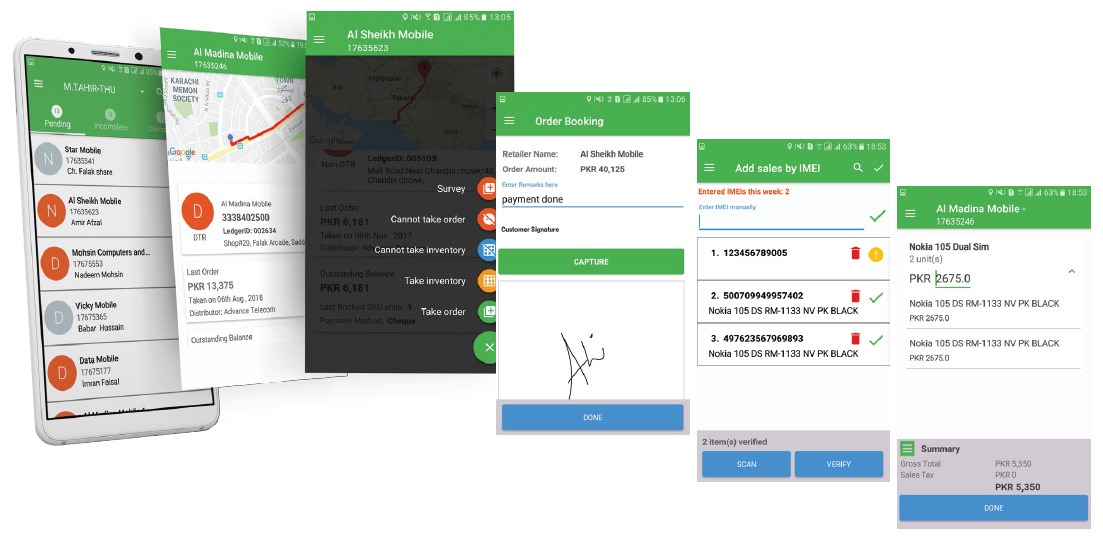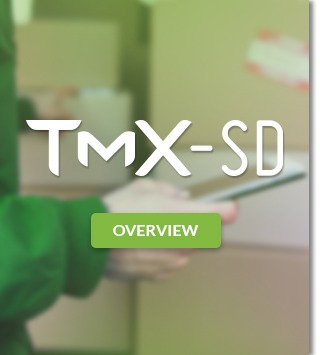
HMD Global is a Finnish mobile phone company made up of the mobile phone business that Nokia had sold to Microsoft in 2014, then bought back in 2015. HMD engaged TLX Mobility to streamline its sales and distribution network in the United Arab Emirates and Pakistan.
Sales and Distribution Operation Challenges
Nokia’s sales and distribution operations in many regional markets suffered from lack of tracking visibility of its smartphone inventories maintained across the network.
At some places, Nokia was still using paper forms for managing parts of its distribution operations. Information from the field was collected and collated at least a day later and manually entered into distribution management systems. There were several major issues, including:
- With a number of disparate functional systems deployed with little or no inField Agents were making errors while using paper forms for recording sales and deliveries.
- Field Agents had to wait in sales processing queues for hours on their return to the head office after a day’s work taking orders in the field.
- Retailers’ sales to end consumers could not be tracked accurately.
- Retailers existing stock levels were not accurately available at the time of order booking by field agents resulting in frequent equipment returns to distributor warehouses.
- Promotional activities could not be performed effectively due to lack of market visibility.
TMX-SD as the Solution
TMX-SD is a field mobility solution for managing end to end sales and distribution processes. It allows field agents, distributors and retailers to manage key tasks with considerable ease and efficiency. Salient features of the solution are:
- TMX-SD tracks the movement of each Nokia smartphone unit through every stage of the fulfillment life cycle. i.e. Nokia -> Distributor -> Retailer-> Consumer.
- Both Principal and Distributors can have real-time visibility of field agent journey routes, sale orders booked and agent productivity.
- Retailers can record and share their sales figures instantaneously.
- Provides visually rich dashboards of real-time data for better analysis and decision-making.
- Orchestrates tighter controls and reduces cost, time and effort at all stages.
TMX-SD is a Software as a Service (SaaS) solution deployed at Microsoft Azure Cloud, ensuring 99.99% uptime and rigorous compliance with international data and application security standards.
TMX-SD Mobility Portal – is an online web application that is used by enterprise users at the head offices to manage, monitor and direct sales operations in real-time. It is used by the Nokia’s management and company’s distributors as follows:
Nokia Management – at the head office has the master authority over the system. Users can:
- Manage orders from booking till receipts and ledger entries.
- Manage daily operations by maintaining stocks, pricing, discounts, retail outlets and users.
- Define field agent journey plans, assign sales targets and associated incentives.
- Monitor product-wise sales for each distributor, wholesale/retail outlet, and field sales agent through simple visualizations created from real-time data.
- Take decisions immediately based on reports and analytics.
Distributor – utilizes portal for defining field agent journey plans, managing retail outlets and tracking sales targets. Users can:
- Receive shipments from head office.
- Issue stock to wholesalers/retailers by IMEI number so that each unit can be separately tracked.
- Manage store-wise payments and receipts.
- Accept returns from wholesalers/retailers by IMEI number and generate Credit Notes.
- Set targets for wholesalers/retailers.
- Generate daily invoices and operational reports.
TMX-SD Mobile App – is an easy-to-use smartphone application that is designed for automation of daily tasks performed by field agents. Instead of taking orders on paper, agents capture orders using the app that transmits these to the Cloud making them available to supervisors at the head office in real-time.
Retailers can:
- Make and report sale to consumers.
- View sales history and their current stock.
Distributor Sales Agents can:
- Take orders from wholesale and retail outlets.
- View sales versus targets, payment history, credit limits and receivables.
- View and follow the predefined journey plans.
- Capture stock information at each outlet.
- Conduct surveys to get up to date information of market and competitors.
The complete order tracking cycle for Field Agents

Key Benefits
TMX-SD has delivered the following benefits to Nokia’s Sales and Distribution operation:
- Sales recording time at the day end has been reduced from 4 hours to less than 1 hour.
- Order execution efficiency has been increased by 20% due to automation.
- Location access via GPS allows sales managers to plan more efficient routes for their field agents.
- Duplication of sales transactions has been minimized drastically.
- Tracking of each device sold at every stage of the supply chain and the sales cycles has improved end-to-end operational visibility.

